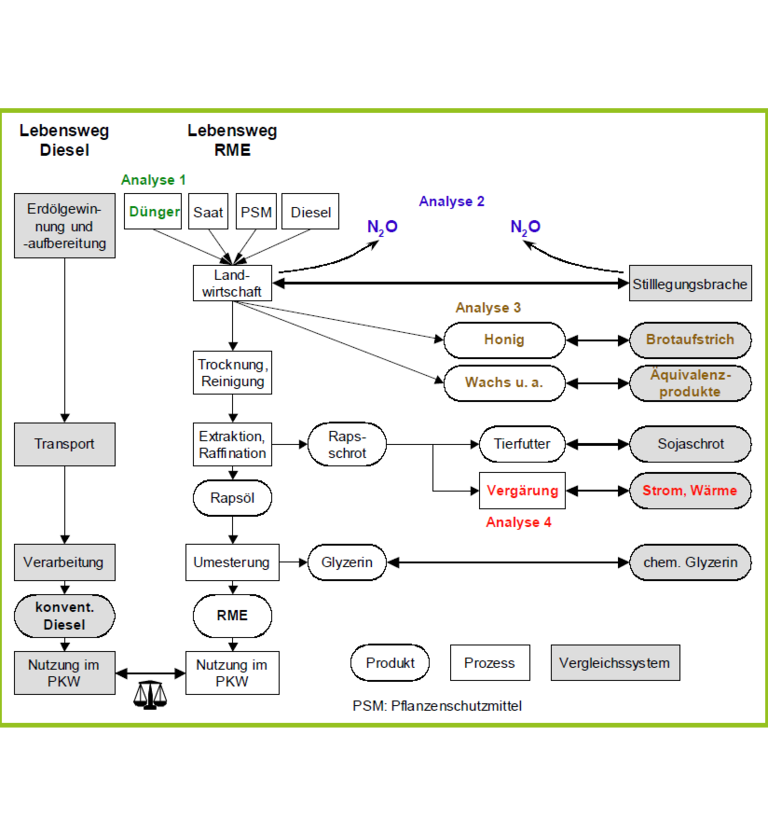Update and New Aspects of the LCA on RME

Biodiesel (rapeseed oil methyl ester, RME), made from rapeseed, has become increasingly important as a source of fuel. During the last year alone its production has increased by approximately 30 % to 1.1 million tonnes. In recent years there has been significant progress made in scientific research into biodiesel. For the Union for the Promotion of Oil and Protein Plants (UFOP), this has raised the question, “What do we now know about the environmental advantages and disadvantages of biodiesel over the entire production-to-consumption life cycle?”
A study answering this question has now been completed by the IFEU Institute Heidelberg. The study found that using biodiesel has positive outcomes in terms of energy use and greenhouse gas emissions, despite the fact that the production of energy plants (the use of fertiliser and tractors for fieldwork) consumes fossil energy. By using biodiesel, 1,500 litres of mineral oil can be saved with each hectare of agricultural land used to produce rapeseed. Or, by comparison, each litre of biodiesel saves the equivalent of 2.2 kg greenhouse gases.
“The result, however, depends on the way co-products of biodiesel production, especially rapeseed meal and glycerine, are used”, says Sven O. Gärtner, co-author of the study. For instance, rapeseed meal is, at present, mostly used as animal feed, substituting for soy bean meal. From an environmental perspective, the outcomes for biodiesel could be further improved if rapeseed meal would either be combusted directly or used to generate biogas. Other co-products, such as honey originating from rapeseed plants, did not significantly affect the results of the assessment.
Downloads
Runtime
January 2003 – December 2003
Client
Union for the Promotion of Oil and Protein Plants (UFOP, Bonn)
